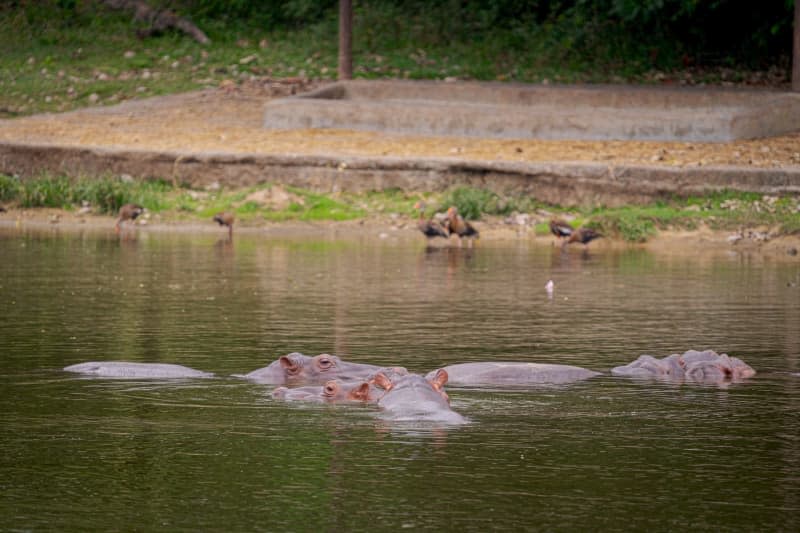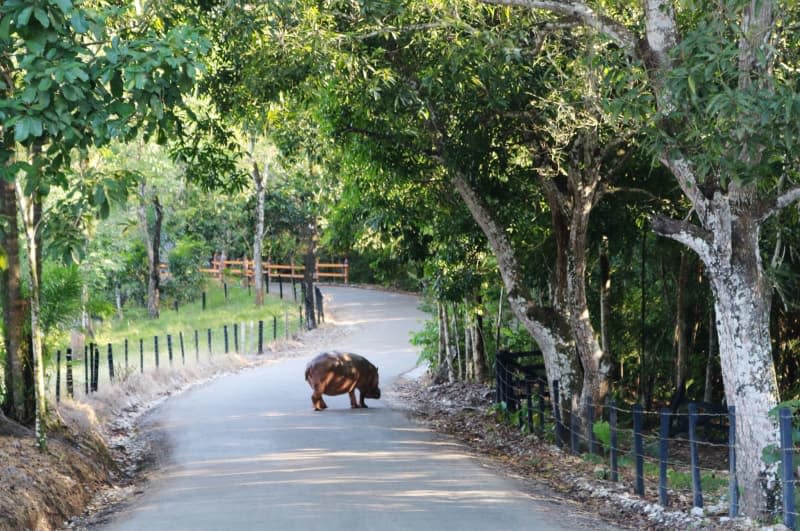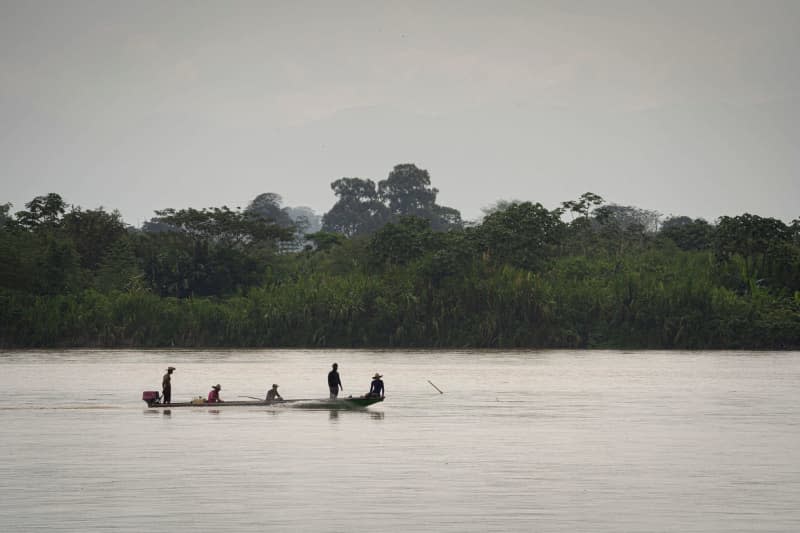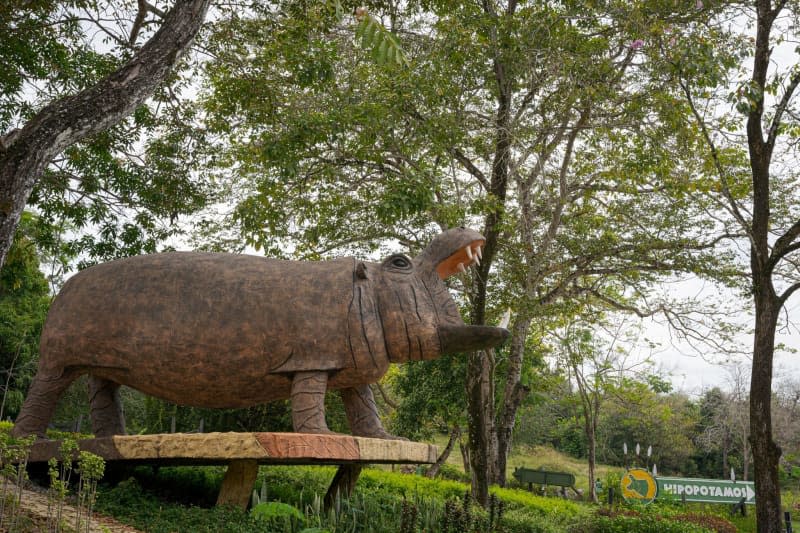After much delay, Colombia is finally tackling its hippo problem

Drug baron Pablo Escobar once brought four African hippos to Colombia for his own private zoo and now they are a multi-tonne problem.
Escobar, the head of the powerful Medellín cartel, was shot dead in 1993, but his hippos remain and have since become an outsize pest, disrupting the local ecosystem, destroying fields and endangering residents.
The government long delayed tackling the invasive species but has now come up with a range of solutions, starting with sterilization.
"Surgical sterilization is just one of the three measures envisaged by the Ministry of the Environment as part of the plan to manage and check hippos in Colombia," says Colombian Environment Minister Susana Muhamad, who presented the plan.
Further steps are to include the euthanization and relocation of the animals.
Drug lord, narcoterrorist and politician Escobar brought the hippos to Colombia during the 1980s, to live alongside elephants, giraffes, kangaroos and other exotic animals in his private zoo on the luxury estate Hacienda Napolés, outside Medellín.
When Escobar was killed by security forces in 1993, the hippos were left to fend for themselves and the past 30 years saw the original four reproducing vigorously and spreading nationwide.
More than 160 specimens are said to currently live around the Rio Magdalena river where they are finding plenty of food and water and the climate is favourable.
With no natural enemies and without intervention, the population could grow to 1,000 animals by 2035, the minister says. She warned that such a development could threaten the original diversity of species.
Hippos, after all, can pollute the soil and water, unbalance the ecosystem and endanger local residents.
So far, though, many people have become accustomed to the animals and even use them for tourism.
But the risk of an attack remains. "You have to be very careful," says biologist David Echeverri from the Cornare regional environmental centre. Even if they appear to be a calm species, hippos are actually unpredictable.
Their weight means they are able to capsize boats.
One way to slow their spread is sterilization, albeit a "complex and costly process" according to the Ministry of the Environment. "There is a risk that the animals will die, that they will have an allergic reaction to the anaesthetic or that the human team on site will be endangered," the minister says.
Sterilizing a hippopotamus costs an average of 40 million pesos (around $10,302).
The government wanted to sterilize 20 animals by the end of 2023 and 40 per year after that.
But further measures are needed beyond sterilization, leading the government to look to relocations. Talks are currently being held with Mexico, India and the Philippines. India has already offered to take in 60 animals.
There are also plans to assess how the animals can be euthanised under moral aspects and the ministry is working on an ethical euthanasia protocol for this purpose. No details have yet been released.
Leaders in the past have also attempted to address the burgeoning population. "There is not one measure that would be effective enough to guarantee that they stop reproducing," says Echeverri.
Simply shooting the hippos, which researchers have already recommended, is out of the question for the state of Antioquia and other animal-loving Colombians.
There was massive outrage nationwide when Pepe, a stray hippopotamus, was shot on ministry orders in 2009 and soldiers posed with the slain animal.
Meanwhile, sending the hippos to Africa could do more harm than good, specialists fear.
"When we transport animals or plants from one place to another, we also transport their pathogens, bacteria and viruses," says biology professor María Ángela Echeverry from the Javeriana University in Bogotá. "We could bring new diseases to Africa."
These complexities are partly why the country has been waiting a long time for a plan to tackle this problem.
"None of the three measures is effective on its own, but it is important that they are implemented simultaneously," says the minister. "We are in a race against time here."




